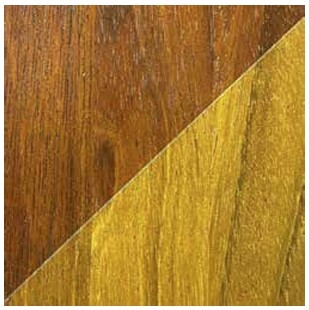Photosensitivity

Photosensitivity is the degree to which all species change color in response to natural sunlight or UV light. Depending on how much natural sunlight or UV light the wood is exposed to will determine how quickly and how drastically the change occurs. Whether finished or unfinished, wood changes color over time due to age, oxidation, and exposure to light. Some color change is to be expected for all species. Certain species, such as American cherry, walnut, and Jatoba, are notorious for drastic change in color. The intensity of the color change depends on many factors: the species, finish, exposure to various forms of lighting, and exposure to the particles in the air. Some species darken in color, some lighten in color, and some change color altogether, over time. Oak, maple, hickory, walnut, and many other domestic species generally will fade in color and/or amber as the finish/stain is affected by the UV light. Generally, tropical/exotic species will darken and richen in color with exposure to UV light. Species are classified in this publication based on how drastic they can change color, as being low, low-to-moderate, moderate, moderate-to-high, or high.
SPECIES
LOW
Ash
Australian Cypress
Hickory, Pecan
Hickory, True
Mesquite
Pau Marfim (Brazilian Maple)
LOW-TO-MODERATE
Acacia, Big Leaf
Acacia, Short Leaf
Beech
Birch
Chestnut
Ipé
Koa, Acacia
Maple, Hard
Maple, Soft
Oak, Red
Oak, White
Pine, Eastern White
Wengé
MODERATE
Amendoim
Andiroba
Bubinga
Cumaru (Brazilian Teak)
Douglas-fir
Goncalo Alves
Kempas
Mahogany, African (Khaya)
Mahogany, Honduran
Mahogany, Santos
Merbau
Patagonian Rosewood
Pine, Southern Yellow
Tiete Rosewood
Tigerwood/African Walnut
MODERATE-TO-HIGH
Jarrah
Purpleheart
Teak
Walnut, Black
HIGH
Cherry, Black
Jatoba (Brazilian Cherry)
Padauk
Sapele

